Discover Asolo And The Surrounding Prosecco Vineyards On Your Next Trip
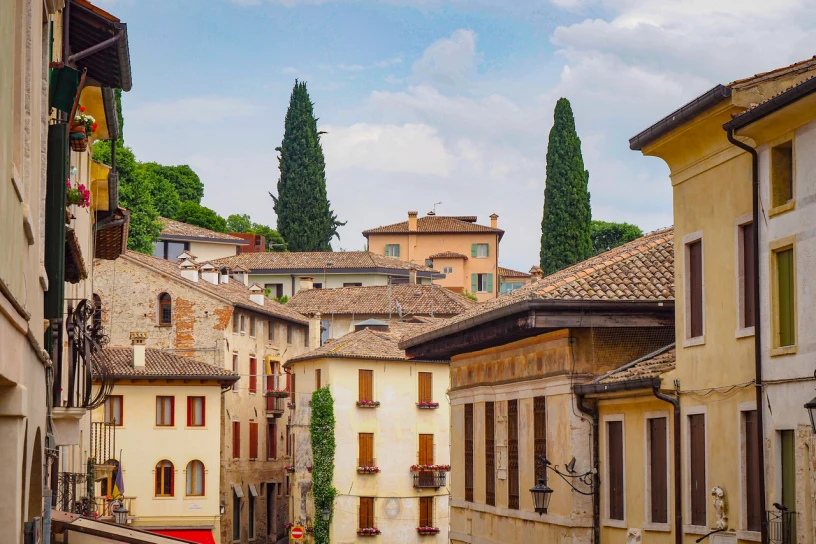
Why you should make this largely undiscovered mediaeval pearl surrounded by Prosecco country your next (wine) destination.
Nestled at the foot of Monte Grappa and the Italian Prealps, the ancient hilltop village of Asolo has long been a magnet for artists, writers, and those seeking to escape the crowds. More recently, the area is making waves as the ‘ascending star’ of Prosecco DOCG wines. While Asolo DOCG Prosecco certainly deserves the praise, the letter seems a bit funny considering Prosecco is made in the area since at least the 14th century.
Dubbed the town with a hundred horizons thanks to the stunning unobstructed views in every direction, Asolo is a hidden gem, and I can only recommend making it your next (wine) destination. Whether that’s visiting for a day trip from nearby Venice or staying a few days in the area.
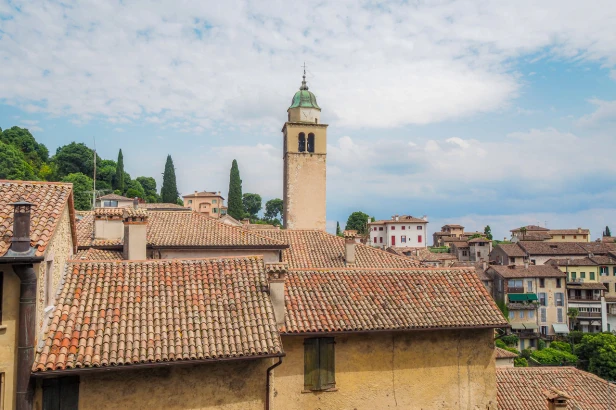
So, what is it all about?
This beautiful corner of Italy’s Veneto isn’t too far from my former home in the Valpolicella area further in the west near Lake Garda, though admittedly that was a long time ago.
Still, returning to this little pearl after more than 20 years, it felt like nothing had changed. OK, to tell the truth, a couple of things have changed. The traffic light managing car access along the narrow one-lane alleyway leading into the historic centre did not exist in the past. Quite a few of the shops nestled under the arcades lining that small street which I loved to browse for hours have also gone. Thankfully, those that have taken their place still mostly offer regional craftmanship.
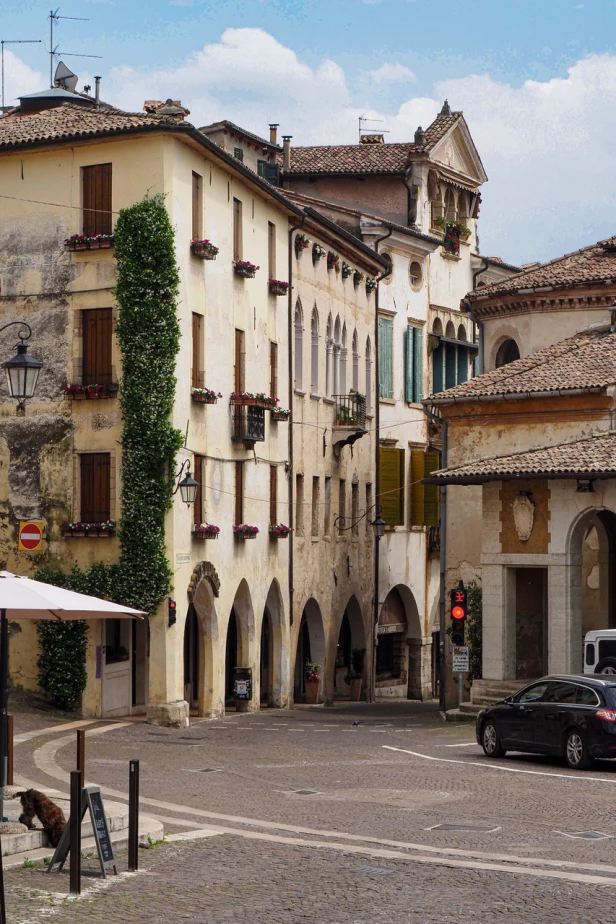
But otherwise?
The historic town square and small cobble-stoned streets lined with beautiful historic buildings are still pretty much how I remembered them.
The town takes its name from the Latin word asylum, which translates into refuge. And that’s exactly what this little gem is. A shelter from the outside world, a place where time seems to stand still, where you can slow down and simply enjoy wandering around without any particular aim.
What to know about the history of Asolo
Founded during Roman time, Asolo particularly shined after it came under the rule of Venice during the 14th century. During that time, the small village attracted many wealthy Venetian families who build their summer residences in the small town.
The small village also became the home of Caterina Cornaro, the exiled Queen of Cyprus, who spend the last years of her life here. During that short time, she set up a court of artists, poets, and painters. Later, attracted by the beauty of the little village and its stunning surrounding, many other famous artists chose to set up home here too, even if it might have been for a short while only. The most renowned include writer Ernest Hemmingway, English poet Robert Browning, and Italian actress Eleonora Duse.
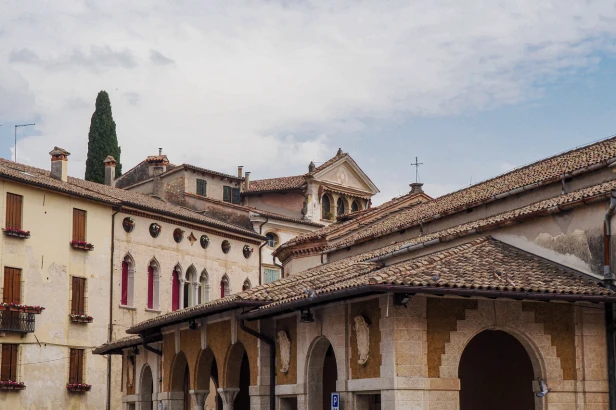
Today, Asolo is part of the Italian towns awarded with the Bandiera Arrancione (the orange flag), and thus part of the most beautiful and well-preserved villages of Italy.
If you want to explore the surrounding vineyard area, or the wider Venetian hinterland, away from the crowds in Venice, Asolo is the perfect base.
Key Takeaways
- For most international travellers, the area is an under-the-radar wine region offering many exciting slow-travel experiences.
- Located in northeastern Veneto in Italy, just around one hour from Venice Marco Polo International Airport.
- The small village can be easily explored in a day, but staying 2-3 days in the area will allow you to explore the surrounding area, offering many stunning historic and cultural sites.
- Asolo officially belongs to the ‘most beautiful towns of Italy’.
- Best time to visit is from mid-April through October.
- Best option to get around is by car. If you don’t want to drive yourself, there are various driver services available
- Asolo DOCG is one of only two Prosecco DOCG denominations, boasting various leading Prosecco wineries.
- While many of the local wineries are open to the public on a fixed schedule, if you are keen to enjoy a tasting at a particular winery, or if your group is larger than four people, I recommend making arrangements in advance.
How to get to Asolo
The area in the northeast of Italy’s Veneto region is located around 70 kilometres to the northwest of Venice airport.
The best option to arrive is by car, which takes around one hour.
If you are looking for public transport, the best option is to take the train from Venice to Treviso and the bus from Treviso to Asolo. However, you will arrive at the lower part of town and still need to take another bus to the historic upper town. Which can be a bit exhausting if you plan only a day trip from Venice, or in case you are travelling with luggage if staying longer.
Once in the area, there are buses connecting Asolo with some of the surrounding municipalities However, if you want to explore the vineyards, visit some of the wineries, and some of the most interesting sites, again your best option will be a car.
If you don’t want to drive yourself, there are some driver services available.
What is the best time to visit Asolo
The best time to explore the beautiful Asolo DOCG area is from mid-April through October. Temperatures usually start to approach the 20°C mark during the later part of April, vineyards will start to sprout and the whole region will erupt with beautiful spring blossoms. The summer months (July, August) can get hot, with day temperatures exceeding the 30°C. September and October bring nice, temperate autumn weather, beautiful golden autumn colours in the vineyards, and the local grape harvest usually starts in the early part of September.
How much time should you plan for a visit to Asolo
The small town can be easily explored in only half a day, though you can effortlessly extend this to a full day including walks to the stunning Rocca Fortress, and perhaps an extended lunch and prosecco tasting.
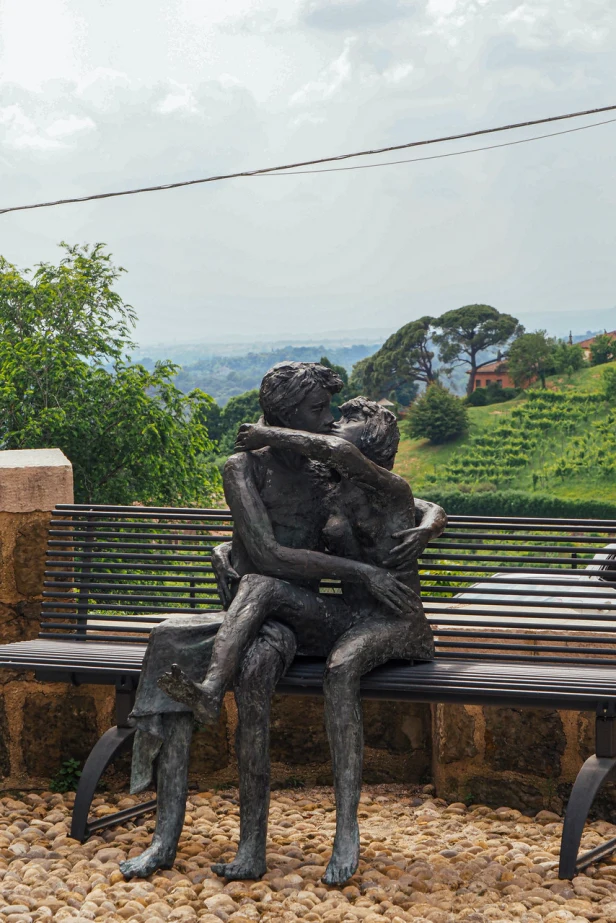
However, unless you make this little gem a day trip from nearby Venice, I recommend staying at least two (and even better three) days in the area. The nearby surroundings offer a wealth of stunning historic sites, other lovely small towns to explore, and not to forget the Prosecco DOCG vineyards of Asolo and nearby Conegliano Valdobbiadene.
Where to stay in Asolo
There are a couple of hotels in the small town but if you are planning to stay in the area, my pick would be 5-star Villa Cipriani.
Top things to do in Asolo
While not completely car-free, thanks to strict traffic restrictions the historic centre is a lovely, pedestrian-friendly small area that invites to stroll around without much of a plan. However, there are a couple of sites worth to seek out.
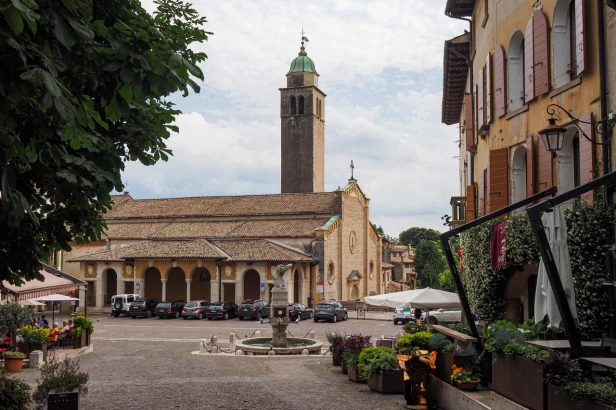
Build on the remains of an ancient building dating back to Roman times, the large 16th century Cathedral and adjacent bell tower dominate the southern side of Piazza Garibaldi, the main town square. Inside the cathedral, you will find important historic paintings including Lorenzo Lotto’s 16th century ‘Assumption’, a copy of the ‘Assumption’ by Tizian dating to the 19th century, and a painting of Saint Francis of Assisi that dates to the 15th century.
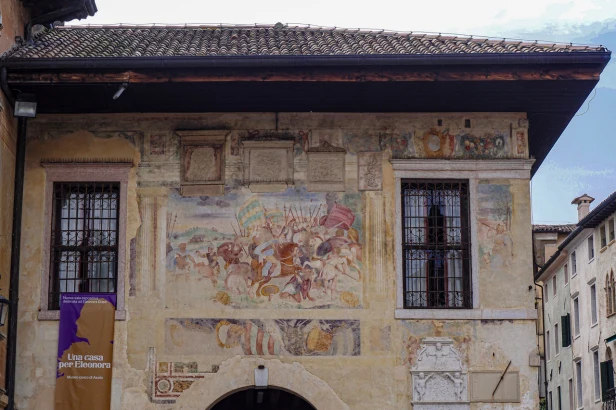
Dating back to the 1400s, Palazzo della Regione, nestled at the edge of the large town square spots amazing historic frescoes and a lovely loggia. It is now home to the regional museum.
Piazza Garibaldi itself is lined with some restaurants and bars, inviting to sit down, have a café (Italian for espresso) or a glass of regionally produced Prosecco and marvel over the beautiful buildings surrounding the square.
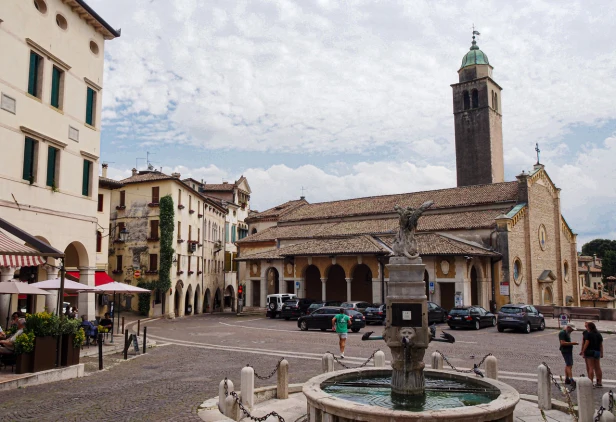
The impressive fountain right in the middle of Piazza Garibaldi, featuring a winged lion, officially called Fontana Maggiore, was build back in the 16th century.
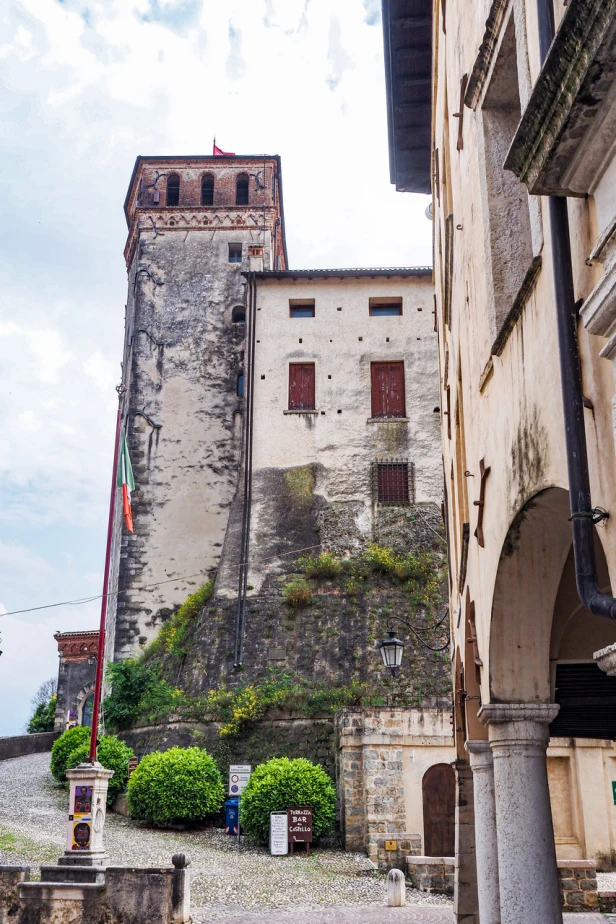
The old castle, dating to the 10th century, from 1489 to 1510 was the home of Caterina Cornaro, the Queen of Cyprus, Jerusalem and Armenia and today is officially called Castello della Regina Cornaro.
Another famous woman calling Asolo home was legendary explorer and travel writer Freya Stark. Her house, today called Villa Freya, was originally built in the late 18th and early 19th century. A beautiful example of Anglo-Saxon architecture, it is attached to one of the Roman arches leading into the walled town.
Reportedly, while living in Asolo, Freya would head to Café Centrale each morning where she would order one cappuccino after the other while she sat there writing until the day would get too hot to continue working.
The historic café located right at the corner of Piazza Garibaldi still exists today, and to this day it remains the centre of village life. Founded in the early 19th century, it is now a member of renowned Locali Storici della Italia (historic restaurants, cafés and bars of Italy) and thankfully has maintained its high quality. Café Centrale is open for breakfast, lunch (serving snacks such as tramezzini, panini, and salads) and later in the afternoon serves a wide range of cocktails and excellent local Prosecco wines for the classic Italian aperitivo offering.
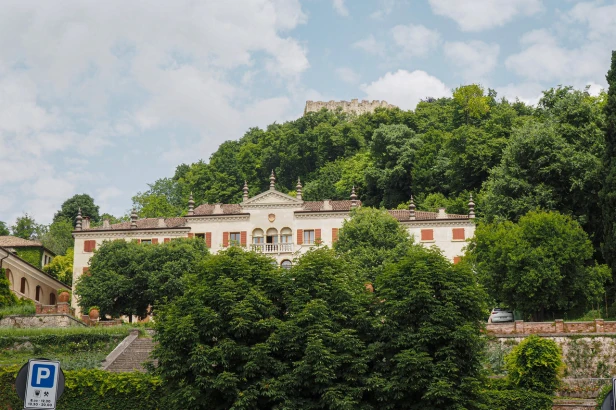
Villa Scotti-Pasini, the impressive 17th century mansion towering over the historic town, once used to be the home of Robert Browning Jr., son of British poet Robert Browning, who bought the building at the end of the 19th century.
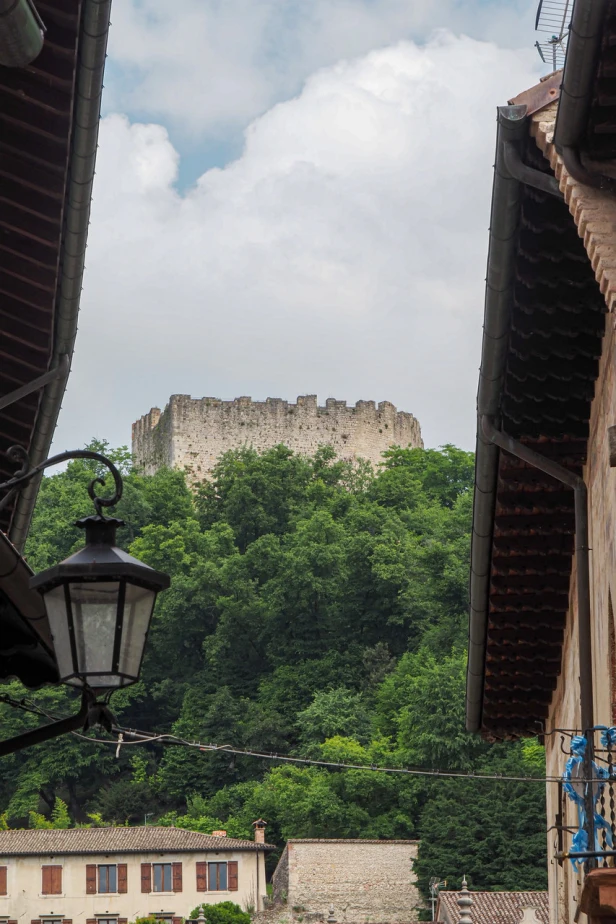
Build during the 12th and 13th centuries, Rocca Braida, the massive polygonal fortress towers above the town on top of Mount Ricco. From the top, you will get the most stunning panoramic views over the historic centre of Asolo and the surrounding area.
A visit to Asolo should not end at the historic town walls. There is plenty to be discovered nearby. Two of the most beautiful sites in the near surroundings include two stunning historic villas.
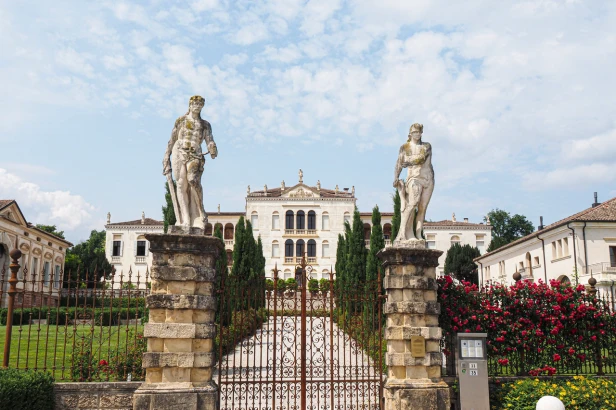
Villa Rinaldi is nestled just outside of Asolo, halfway along the route to the town of Casella. The stunning Palladian-style Villa Rinaldi was built in the 17th century by order of Francesco Rinaldi.
Villa Rinaldi is privately owned, so unfortunately it is not accessible to the public. Still, it’s worth admiring even from the outside only.
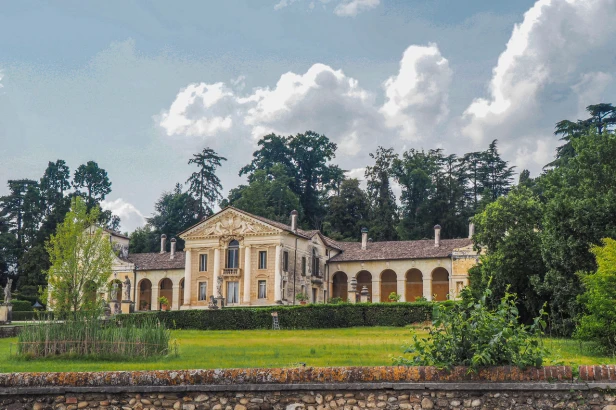
Villa Barbara, sometimes also called Villa Maser due to its location in the town of Maser, is a mediaeval architectonical masterpiece. Designed by famous Venetian architect Andrea Palladio in the 16th century is covered with stunningly beautiful Veronese frescoes.
Since 1996, the beautiful villa is part of UNESCO’s World Heritage Site “City of Vicenza and the Palladian Villas of the Veneto”, which includes more than twenty villas across the Veneto.
Open to the public, today the villa hosts changing exhibitions.
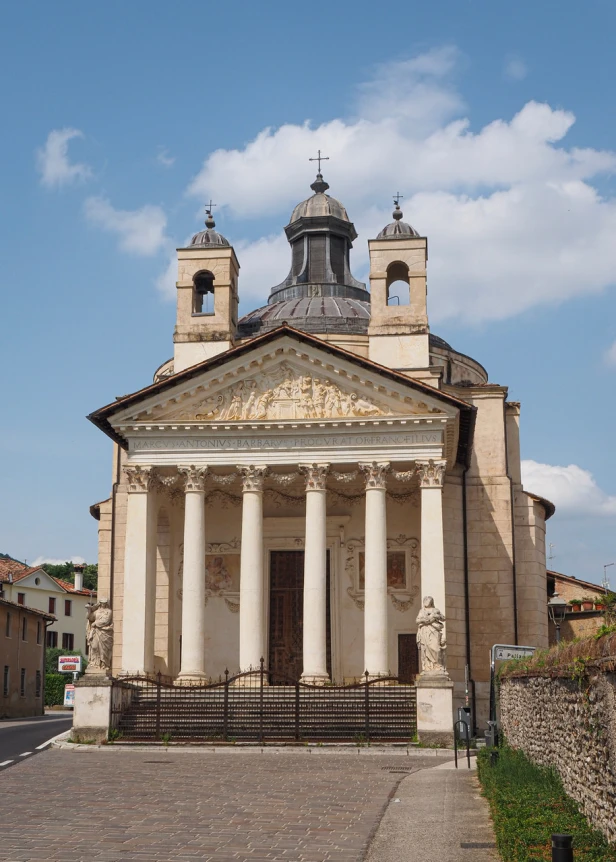
Part of Villa Barbara, the stunning little chapel is located across the street just outside of the small park complex.
Exploring the Prosecco DOCG vineyards of Asolo
Winemaking in the province of Asolo was first introduced by monks in the Middle Ages, and by the 14th century the area had become well-recognized for excellent wines. Winemaking particularly started to flourish after the region was annexed by Venice. At the time, wines from the area were highly regarded and as a result taxed a third more than those from other regions.
Fast forward, Asolo was awarded DOCG status in 2009.
Like nearby Conegliano Valdobbiadene, considered to be the birthplace of modern Prosecco, the surroundings of Asolo are recognised by UNESCO, listed on the Man and Biosphere Programme (MAB) since 2021.
Asolo DOCG area, also referred to as Colli Asolani Prosecco is one of the smallest Italian DOCG denominations, even though it is the fourth largest making sparkling wine in Italy. The vineyards are distributed around the small town of and 17 other surrounding municipalities. Nestled on steep hills, work in the vineyards is strictly manual and thus highly labour intensive.
Wineries to visit in the Asolo DOCG Prosecco region
There are various excellent wineries in the Colli Asolani, and most are small family-owned businesses. That said, visitors have always been welcome here, and today most wineries offer dedicated tasting experience, cellar and vineyard visits.
Below are five excellent wineries worth a visit for various reasons. By no means are these the only ones making excellent Prosecco wines in the Asolo region. Should you visit, make a point to stop at any winery you encounter on your way to seek out more tasting adventures. Chances are very high, you won’t regret it!
Villa Sandi
Via Erizzo 113, Crocetta del Montello
This place is a must see whether you come for the wine or the stunning architecture.
Villa Sandi winery was founded in the 1980s, following the purchase of historic Villa Sandi by the Moretti Polegato family in the 1970s.
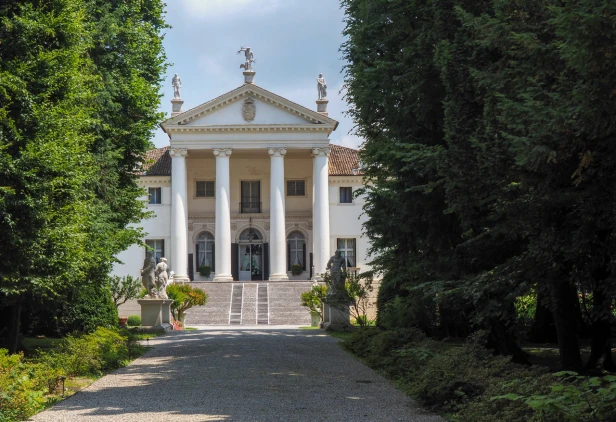
However, winemaking runs deep in the family. In the 1920s Mario Polegato bought the first vineyards in the Asolo area. His son Divo took over the business after World War II together with his wife Amalia Moretti and following Divo’s death, later Amalia ran it with her sons Mario and Giancarlo.
Today, Villa Sandi winery owns vineyards across all Prosecco appellations, including Asolo, Valdobbiadene and the Prosecco DOC area in the flatlands of Veneto.
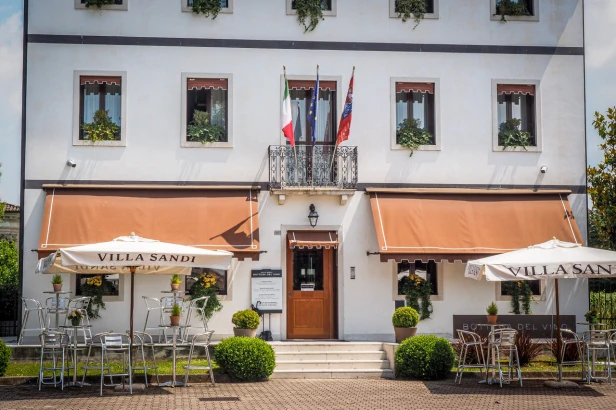
The tasting room is located in a building next to the historic villa and offers the wider range of Villa Sandi.
Tenuta Baron
Via San Pio X 17, Fonte
Located in Fonte, Tenuta Baron dates to the 16th century and once used to be the residence of King Vittoria Emanuele II of Italy. In the 1970s the property was purchased by Domenico Baron who carefully restored the historic buildings and the surrounding park along with the vineyards. However, it took until 2011 that the Baron winery was founded by Domenico’s son Giacomo and his friend Andrea Sbrissa.
Visit for a wine tasting but do not miss a walk in the beautiful park either!
Bresolin
Via Colombine 5, Crespignaga
Nestled in the heart of the Asolo hills towering above the town of Maser is one of the younger wineries of the region, founded by brothers Enrico, Matteo and Davide Bresolin in 2012. Nevertheless, wine knowledge runs deep in the family and the three started to gather their first experiences working in vineyards owned by their grandparents in nearby Valdobbiadene.
The new winery and newly planted vineyards in the Asolo denomination from the was run strictly biodynamically.
Wine tastings on site are accompanied by local products exclusively sourced from nearby producers.
Bele Casel
Via Moresca 136, Caerano di San Marco
Around 40 years ago, Danilo Ferraro started his winemaking carrier when he helped this father-in-law to make wine in the family basement in the evenings after his day job in a nearby distillery.
Fast forward, Bele Casel winery today makes various outstanding Prosecco DOCG including one in the highly regarded ColFondo category (referring to wines left unfiltered to age on the lees). It remains a small, family-managed winery and tastings on-site a quite intimate, often run by a family member.
Tenuta Amadio
Via Longon 74, 31010 Monfumo
The winery, who is run by brother and sister Simone and Silvia Rech, was born on family-owned land that in the past was mostly used to growth apples along with a few vineyards. However, when the apple market collapsed the two decided to leave their carriers outside of the winemaking business, move back to Asolo and build the new winery business from scratch.
Work in the vineyards and cellar is strictly biodynamic and sustainable, resulting in a range of excellent Prosecco including Extra Dry Prosecco Asolo Superiore, Extra Brut Prosecco Asolo Superiore, and Millesimato Dry Prosecco Asolo Superiore.
The winery has one of the most modern tasting rooms with an incredible view over the surrounding vineyards.
What else to see and do near Asolo
If you are planning to stay in the area for a few days, here are a few suggestions what else to do.
- Head to Conegliano Valdobbiadene just east of Asolo, Italy’s other Prosecco DOCG denomination for more wine tasting, and more historic towns and monuments.
- Visit Bassano del Grappa, one of Italy’s most picturesque small towns full of culture, art, architecture, and of course, grappa.
- Visit the nearby cities of Treviso, Vicenza, and Padova.
Final Thoughts
If like me, you love discovering wine regions, the under-the-radar Asolo DOCG is a fantastic place. Prosecco lovers will be thrilled by extraordinary wine adventures while those that don’t care to visit wineries will find amazing historic architecture and cultural sites in and around the small town of Asolo.